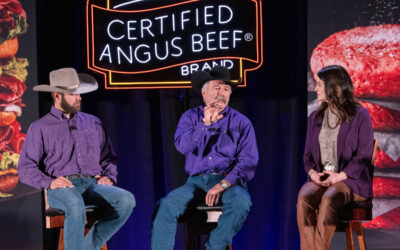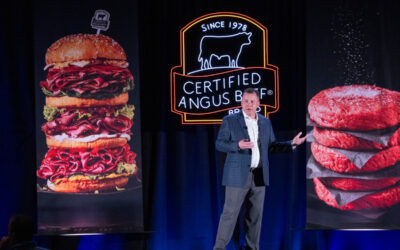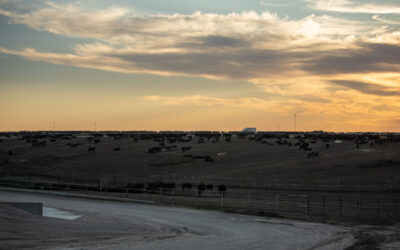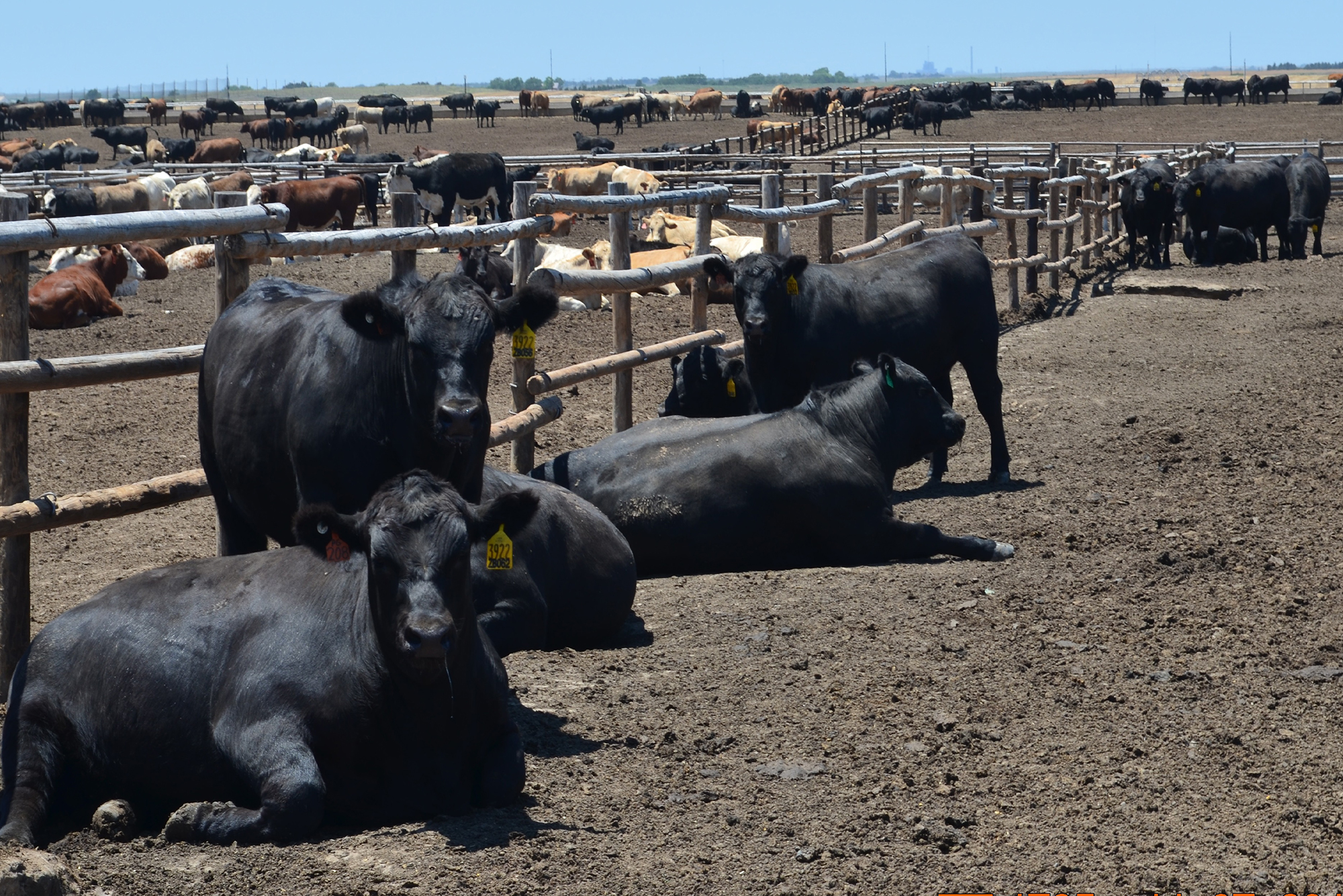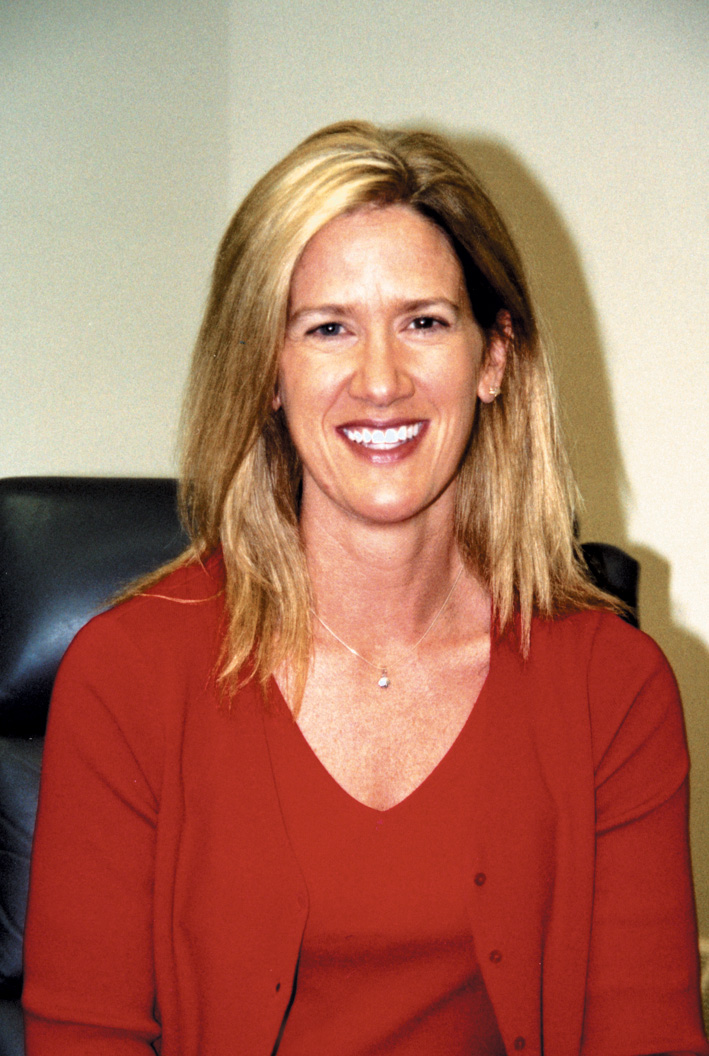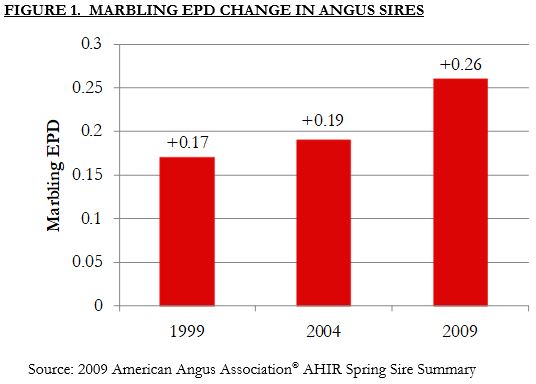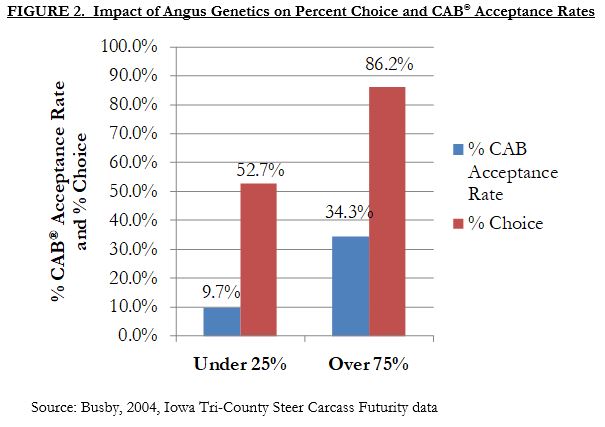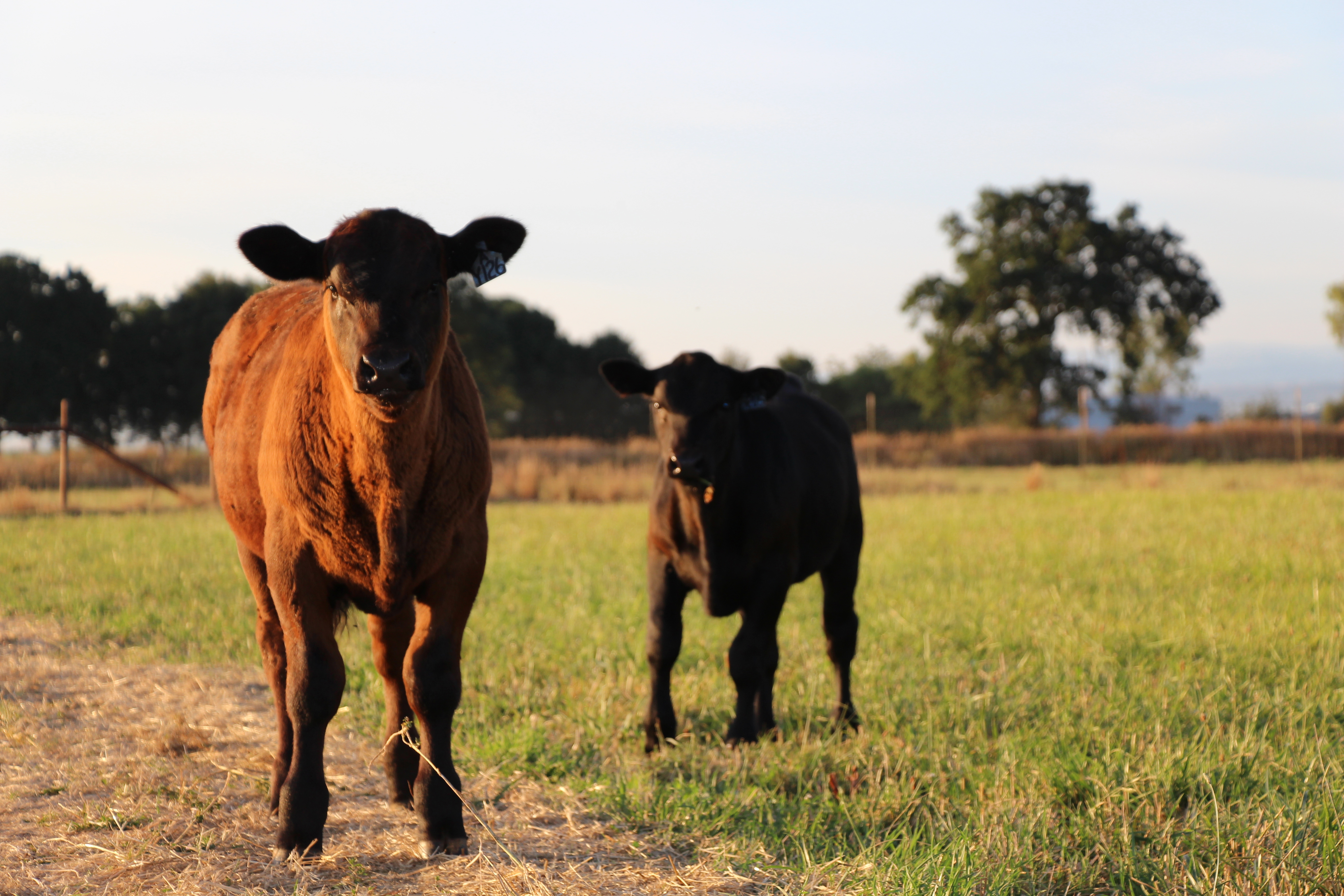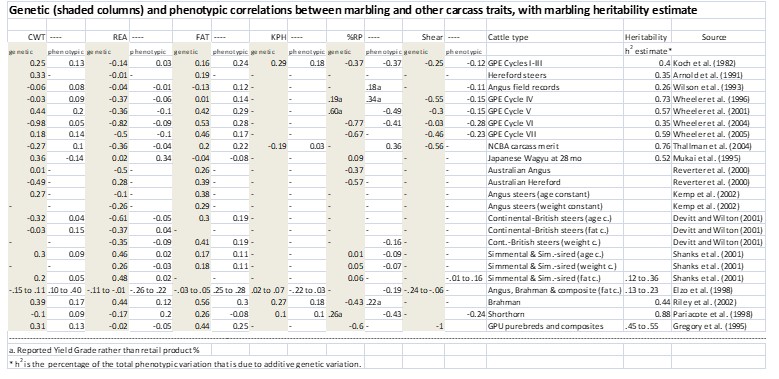
SCIP to the premiums
by Jen Gillespie and Steve Suther
November 11, 2011
First results from ongoing research show an average carcass-value advantage of $134 per head for Angus-sired calves compared to those with bos indicus or Brahman influence.
The Southern Carcass Improvement Project (SCIP) was initiated in 2009 as a collaboration between Kansas State University, Virginia Tech and Gardiner Angus Ranch. Its goal was to measure the impact that a single generation of high-quality Angus genetics can have on feedlot and carcass performance when mated to Brahman-crossed cattle commonly found in the Southern U.S.
“It had to show the effect in one generation to have much impact and gain many believers,” said Mark Gardiner, the Ashland, Kan., Angus breeder who shared SCIP progress at his family’s bull sale in September.
The idea came up while talking with longtime friend Tom Brink, senior vice president of Five Rivers Cattle Feeding, about beef quality in the South, where many herds were selected for adaptability with little emphasis on carcass traits.
Brink had bought many calves and feeders from those states, and he knew a huge share of them hit a genetic roadblock to marbling. Gardiner had sold many bulls into those states and saw what a difference genetic improvement was making for his customers. Both men saw the USDA Choice percentage climb in Kansas packing plants while Texas plants lagged.
“This is a major problem, yet there is no broad-scale effort to improve quality grades in Southern-origin cattle,” Brink noted at the Gardiner sale. “In fact, the industry problem is rarely even discussed, although its annual cost is more than $200 million, not counting the lost beef demand due to lack of sufficient high-quality beef.”
Three years earlier he and Gardiner wondered, what if a demonstration project could be set up in with a major university to show the added value in breeding to an Angus alternative? They talked to Virginia Tech animal scientists Dave Notter and Bill Beal, geneticist and breeding systems experts, respectively. Gardiner would fund the research if a scientifically valid structure could be set up.
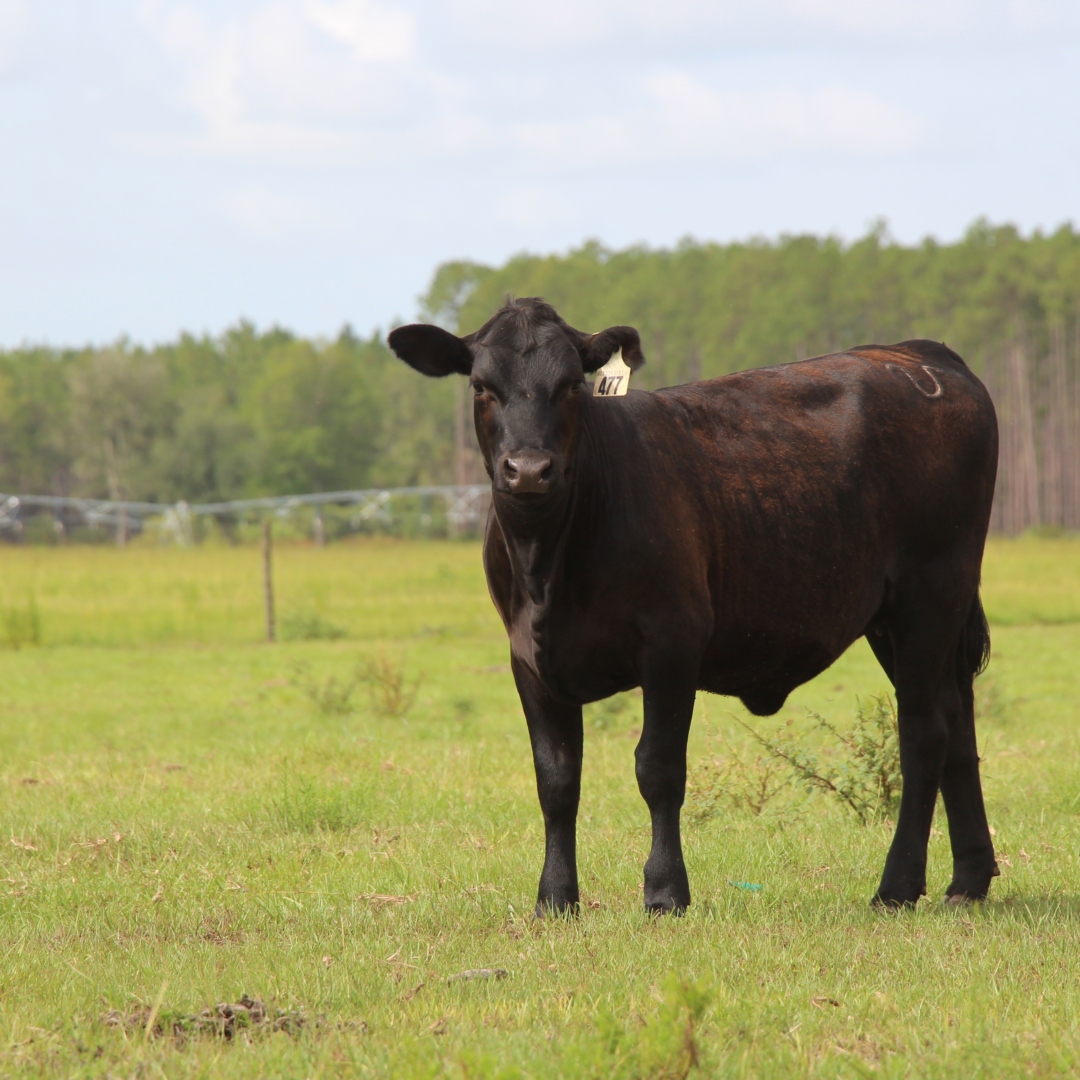
As Beal recalled, “Tom proposed that we identify a group of cows typical of Southern herds and breed them either to typical Southern bulls or high-growth, high-carcass Angus bulls. The question was how to do it.”
He liked the idea of “demonstration” as opposed to clinical study.
“We could all sit back and go to the Journal of Animal Science, where there are published studies that used bulls with different marbling levels, and they show that what you see is, in fact, what you get in carcass merit. Okay,” Beal said, “but those were controlled studies that some meat scientist did at a university.” Such results still seemed theoretical to real-world ranchers.
A demonstration project may not impress animal scientists, but it had to pass their scrutiny. The target had to be commercial ranchers who had adapted their herds to challenging Southern environments, but who doubted whether Angus genetics could make a difference in their progeny.
After ruling out multiple herds and locations for adding too many wild cards to the project design, Beal and Notter saw the Gardiner embryo transfer (ET) program as part of the solution: All that was needed were Southern donors.
Simplicity may have allowed some elbow room, but skeptics are universal. “We couldn’t have either ranchers or animal scientists look at the study and say, ‘well obviously it worked because they picked those donors or those bulls.’ We really went to great lengths to be representative and then utilized random mating of bulls to the Southern donors,” Beal explained.
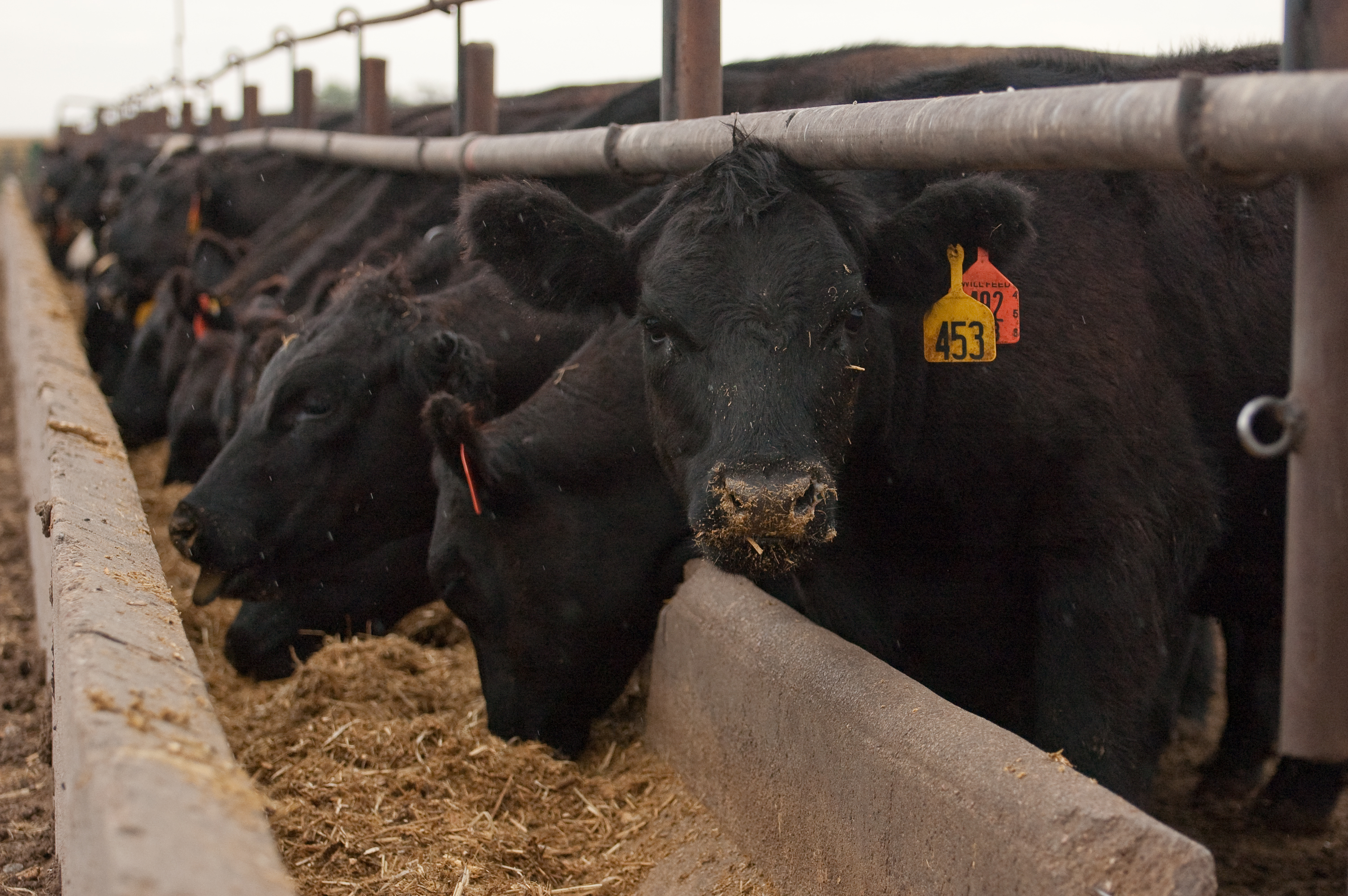
Igentity® DNA profiling helped minimize concerns about selection of specific individuals, too, he added. “We characterized those cattle, cows, bulls and calves, so you could see which ones had marbling potential.”
Consulting with Notter, 22 representative cows were purchased and relocated to the Gardiner Ranch for the ET program; 12 of them produced calves from random mating to sires from eight bos indicus breeds or three Angus bulls. They were born in spring 2010, raised as contemporaries, weaned and fed together through harvest.
Carcass data on 57 of those Angus- or “Southern”-sired calves shows big differences, although leanness was similar as measured by yield grades. Two-thirds of the Angus-sired group graded Choice, but none of the non-Angus graded above Select.
On average, the Angus-sired group finished with higher marbling scores, larger ribeye areas, more backfat and heavier carcass weights compared to the Southern-sired group. The value of those differences added up to $134 gross and a net $92-per-head economic advantage after accounting for feed costs.
The Angus sire effects for the first-year calves included a 103-point marbling advantage—more than a full USDA quality grade—along with nearly another inch of ribeye area and 61 more pounds of carcass.
Larry Corah, Certified Angus Beef LLC (CAB) vice president for supply, said demand for high-quality beef is running high, even as the supply tightens and quality premiums increase. CAB partners sold more than 807 million pounds in 2011, setting a fifth consecutive annual sales record, despite a stagnant to recession-affected economy.
“This project and its results speak volumes about the opportunity just waiting for ranchers in an area not known for high quality to cash in on the millions of dollars in annual premiums paid for quality beef,” Corah said.
And the project continues with 56 SCIP calves born in 2011 backgrounded at Gardiner Angus Ranch.
You may also like
Gardiners Highlight Service, Strength at Foodservice Leaders Summit
Mark Gardiner and his son, Cole, of Gardiner Angus Ranch offered a boots-on-the-ground perspective for CAB specialists attending the annual event, designed to deliver resources that help train foodservice teams and serve consumers at a higher level.
Making Sense of Supply, Pricing and Navigating the Market
Amid anticipated shifts in cattle supply and evolving market dynamics, CAB remains well-positioned to navigate the beef sales road ahead. Clint Walenciak addressed how producer profitability, strategic specification adjustments, and resilient demand will help stabilize the brand’s beef supply chain through herd size and pricing shifts in 2025 and beyond.
Every Issue Has Its Moment
Progress happens when people are at the table, engaged and committed to action. With a vested interest in the industry’s future, CAB is leaning in on conversations surrounding evolutions in meat science.

